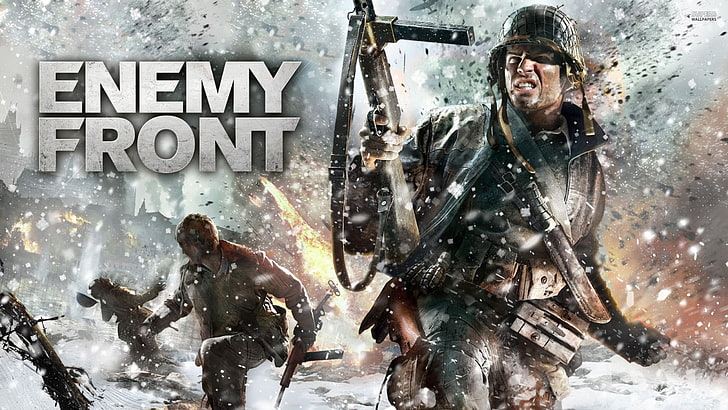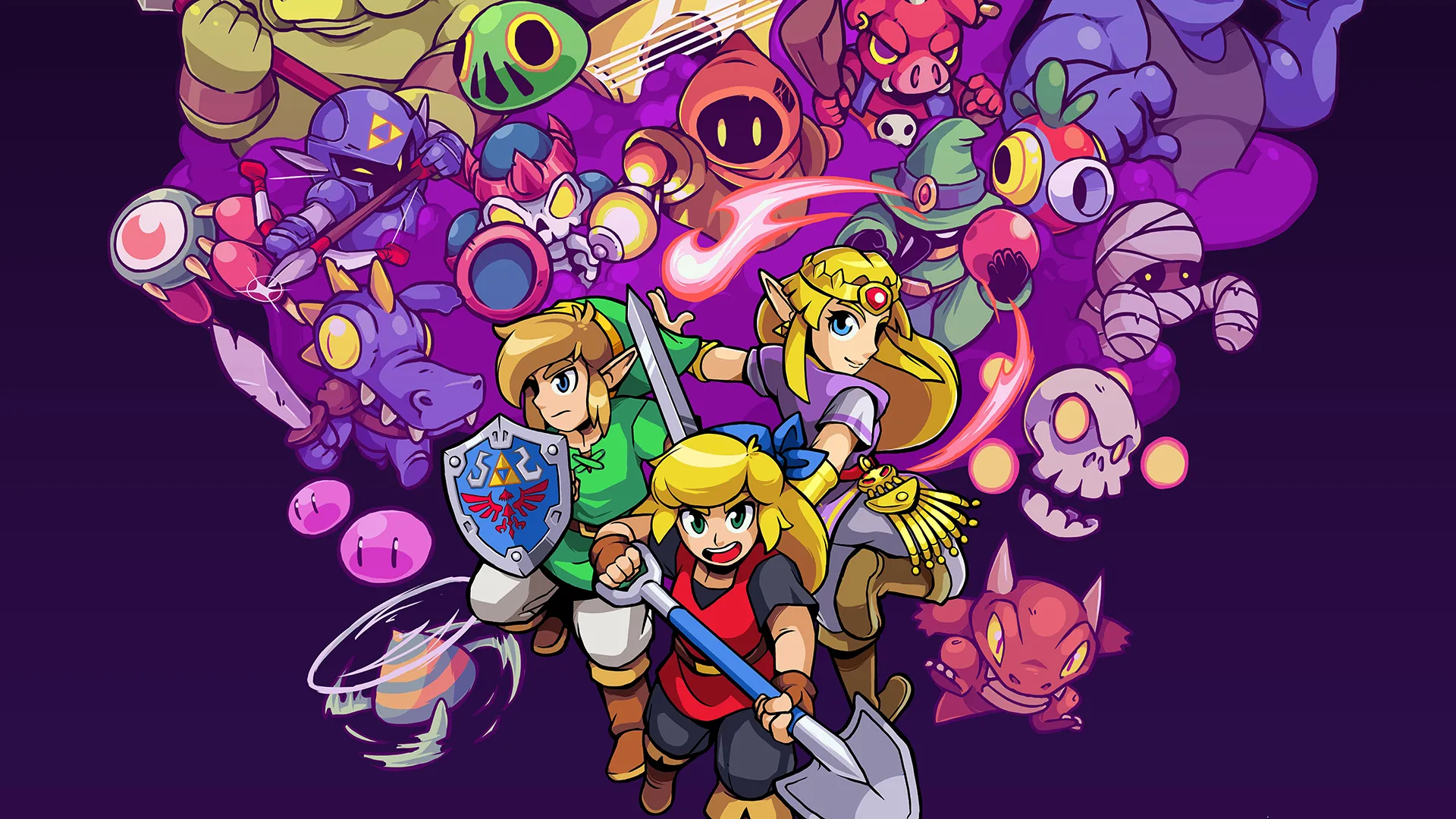Introduction to Enemy Front
Enemy Front is a first-person shooter (FPS) game developed and published by CI Games. Released in 2014, the game is set during World War II and aims to provide players with an immersive experience through its mix of open-ended gameplay and historically inspired missions. Despite being an ambitious title, Enemy Front received mixed reviews due to its combination of strengths and weaknesses. This article will provide an in-depth review of Enemy Front, discussing its gameplay mechanics, visual design, narrative elements, and the critical reception it received. Additionally, a comprehensive FAQ section will address common questions about the game.
Overview of Enemy Front
Key Features of Enemy Front
Enemy Front distinguishes itself from other World War II shooters through several unique features:
- Open-Ended Gameplay: Unlike many linear FPS titles, Enemy Front offers players multiple ways to approach missions, allowing for stealth, sniping, or full-on assault strategies.
- Historical Setting: The game is set during key events of World War II, including the Warsaw Uprising, offering a mix of well-known and lesser-explored historical scenarios.
- Varied Combat Mechanics: Players can engage in close-quarters combat, long-range sniping, and sabotage operations, providing a diverse range of combat experiences.
- Realistic Weaponry: The game features a wide array of authentic World War II weapons, each with distinct characteristics and handling.
Narrative and Storytelling
The narrative of Enemy Front is a crucial aspect of the game:
- Protagonist’s Journey: Players take on the role of Robert Hawkins, an American war correspondent who becomes involved in the European resistance movements during World War II.
- Historical Context: The game places players in the midst of significant historical events, blending real and fictional characters to create a compelling war story.
- Mission Variety: The story unfolds across various European locations, including France, Germany, Norway, and Poland, each offering different challenges and narratives.
Visuals and Audio Design
The visual and audio elements of Enemy Front play a significant role in creating an immersive World War II experience:
- CryEngine 3: The game is powered by CryEngine 3, which provides detailed environments, realistic lighting, and dynamic weather effects.
- Sound Design: The sound design is notable for its realistic weapon sounds, ambient battlefield noise, and an atmospheric musical score that enhances the tension of combat.
Gameplay Mechanics and Features
Combat and Stealth Mechanics
Enemy Front offers players flexibility in how they approach combat situations:
- Stealth Gameplay: Players can choose to sneak past enemies, using silenced weapons and distractions to avoid detection. The stealth mechanics are straightforward but add a layer of strategy to the gameplay.
- Combat Mechanics: When opting for direct combat, players have access to a variety of World War II-era firearms. The shooting mechanics are solid, with a focus on realism in weapon handling and recoil.
- Environmental Interaction: Players can use the environment to their advantage, such as triggering explosive traps or finding cover to avoid enemy fire.
Mission Structure and Design
The mission design in Enemy Front is a mix of linear and open-ended levels:
- Open-Ended Levels: Some missions offer open environments where players can choose their path and method of attack. This non-linear approach allows for replayability, as different strategies can lead to varied outcomes.
- Linear Missions: Other missions follow a more traditional linear design, guiding players through a set path with scripted events. These missions often emphasize the narrative and action-packed sequences.
- Objectives and Challenges: Each mission features primary objectives, such as destroying enemy installations or rescuing resistance fighters, along with optional side objectives that provide additional rewards.
Weapons and Equipment
The game features an array of period-accurate weapons and equipment:
- Weapon Types: Players can wield a variety of weapons, including rifles, submachine guns, sniper rifles, and pistols. Each weapon has its strengths and weaknesses, encouraging players to adapt their loadout based on the mission.
- Grenades and Explosives: In addition to firearms, players can use grenades, satchel charges, and other explosives to take out enemy positions or create diversions.
- Weapon Customization: While limited, some weapons can be customized with attachments like scopes and suppressors, allowing for slight adjustments to suit different playstyles.
Multiplayer Mode
Enemy Front also includes a multiplayer component, though it is more of a secondary feature:
- Multiplayer Maps: The game offers a selection of maps based on locations from the single-player campaign, designed for traditional FPS modes like Deathmatch and Team Deathmatch.
- Game Modes: Multiplayer modes include standard competitive gameplay, where players can test their skills against others in fast-paced matches.
- Community Reception: The multiplayer mode received mixed reviews, with some players enjoying the classic FPS feel, while others found it lacking in depth and variety compared to other contemporary shooters.
Reviews and Critical Reception
Positive Aspects Highlighted by Critics
Enemy Front received praise for several of its features:
- Open-Ended Mission Design: Critics appreciated the game’s attempt to offer non-linear missions, providing players with multiple ways to approach objectives.
- Atmospheric Visuals: The use of CryEngine 3 was lauded for creating detailed and immersive environments, particularly in the outdoor settings.
- Historical Context: The game’s focus on lesser-known events like the Warsaw Uprising was noted as a refreshing change from the typical World War II settings in video games.
Common Criticisms
Despite its strengths, Enemy Front also faced several criticisms:
- Outdated Mechanics: Many reviewers felt that the game’s mechanics were outdated, lacking the polish and innovation seen in other contemporary FPS titles.
- Weak AI: The enemy AI was frequently criticized for being too simplistic, with predictable patterns that reduced the challenge and immersion.
- Technical Issues: Some players encountered technical problems, such as bugs and glitches, that detracted from the overall experience.
Player Reviews and Feedback
Player reviews of Enemy Front reflect a mix of opinions:
- Positive Feedback: Some players enjoyed the game’s historical setting and open-ended gameplay, appreciating the ability to approach missions in different ways.
- Negative Feedback: Others were disappointed by the game’s technical issues and perceived lack of depth, particularly in comparison to other World War II shooters available at the time.
Enemy Front Game Official Trailer by World War II Shooter Review
Frequently Asked Questions (FAQs): About Enemy Front:
Q1: What is Enemy Front about?
A: Enemy Front is a first-person shooter set during World War II. Players assume the role of Robert Hawkins, an American war correspondent who becomes involved in resistance efforts across Europe. The game features a mix of stealth, sniping, and direct combat, with missions set against the backdrop of key historical events.
Q2: Is Enemy Front historically accurate?
A: While Enemy Front is inspired by historical events and features authentic World War II weapons and settings, it takes creative liberties with its narrative and character development. The game aims to provide an engaging experience rather than being a strict historical simulation.
Q3: What platforms is Enemy Front available on?
A: Enemy Front is available on multiple platforms, including PlayStation 3, Xbox 360, and Microsoft Windows. The game was released for these platforms in June 2014.
Q4: Does Enemy Front have multiplayer?
A: Yes, Enemy Front includes a multiplayer mode with maps and gameplay modes based on the single-player campaign. However, the multiplayer component is not as developed or popular as those in other FPS games.
Q5: How does the gameplay of Enemy Front compare to other World War II shooters?
A: Enemy Front differentiates itself by offering more open-ended mission structures and a focus on stealth and sniping. However, some players and critics feel that it lacks the polish and innovation of other popular World War II shooters like Call of Duty or Medal of Honor.
Q6: Are there any expansions or DLCs for Enemy Front?
A: Enemy Front does not have major expansions or downloadable content (DLC). The game was released as a complete package, with no additional content available post-launch.
Q7: What are the main criticisms of Enemy Front?
A: The main criticisms of Enemy Front include its outdated gameplay mechanics, simplistic AI, and technical issues. While the game has its strengths, these shortcomings have led to mixed reviews from both critics and players.
Q8: Is Enemy Front worth playing?
A: Whether Enemy Front is worth playing depends on your preferences as a gamer. If you enjoy World War II shooters and appreciate open-ended mission design, you might find the game enjoyable. However, if you are looking for a more polished and innovative experience, you may want to consider other titles in the genre.
Conclusion
Enemy Front is a game that offers an interesting mix of open-ended gameplay, historical settings, and varied combat mechanics. While it has its share of strengths, such as detailed environments and a focus on less-explored aspects of World War II, it also faces significant criticisms, particularly regarding its gameplay mechanics and technical performance.
For fans of World War II shooters, Enemy Front may provide a unique experience, especially with its emphasis on non-linear mission design and stealth elements. However, those looking for a more refined and modern FPS experience might find the game lacking in certain areas.
This comprehensive review of Enemy Front explores the game’s key features, strengths, and weaknesses, providing a detailed analysis for potential players. The FAQ section addresses common questions about the game, helping readers make an informed decision about whether Enemy Front is the right game for them.



